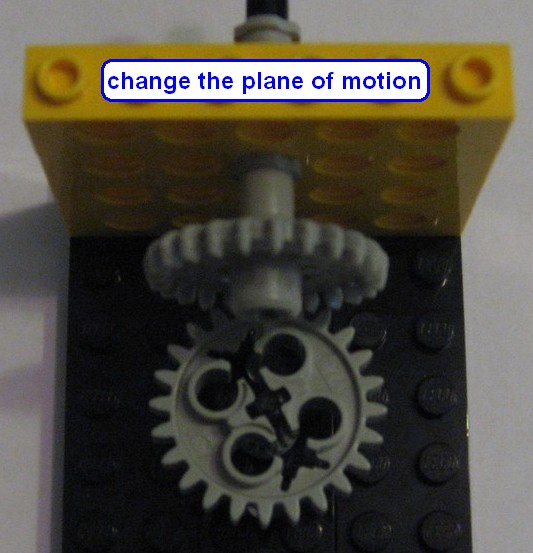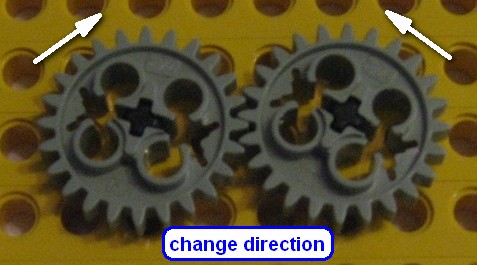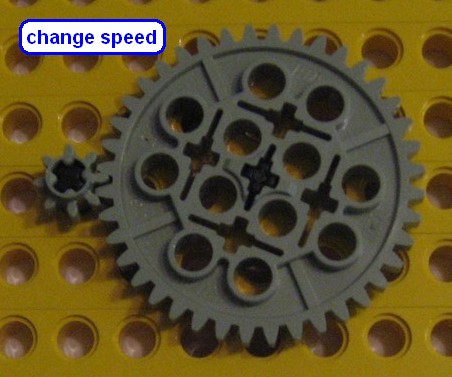At work we needed a "pretty print" utility to take the "flat" output of Unix's
"ps" (list processes) command, and present it hierarchically. I found this
domain to be very small, and yet very intriguing. Each iteration produced
more inspiration than closure. I decided to document several of the
algorithms that resulted; with the idea that you can never have too many examples
in a Computer Science program for use as demos, case studies, or assignments.
Here is sample output of "ps -ef". The second column
is the process' "pid". The third column is the process' parent's pid. Everything
after the time column is the command line that initiated the process (with a
sequence number artificially prepended).
The output needs to demonstrate the hierarchical nature of the data. All processes
that do not have a parent in the input should start at the left edge. Children and
grandchildren are then indented. The columns of interest are: pid, parent pid, and
command line.
05230--00001--01 /dvbnfs/wms/current/bin/wmsd -w /dvbnfs/wms/cur
05233--05230--02 /dvbnfs/wms/current/bin/LRM -w /dvbnfs/wms/curre
27336--05233--19 NOS -i nos.ini -s NOS
27341--05233--20 DIF -i sw_sbt.ini -s DIF
27351--05233--21 FFT_SBT -i sw_sbt.ini -s FFT_SBT
20513--27351--05 /usr/bin/perl /ramdisk/system/bc//bc_
20524--20513--06 sh -c /ramdisk/system/bc//packetChar -
20533--20524--10 /ramdisk/system/bc//packetChar -clist 2009
20527--20513--07 sh -c /ramdisk/system/bc//packetChar -c
20534--20527--11 /ramdisk/system/bc//packetChar -clist 20090
20529--20513--08 sh -c /ramdisk/system/bc//packetChar -cl
20535--20529--12 /ramdisk/system/bc//packetChar -clist 200907
20531--20513--09 sh -c /ramdisk/system/bc//packetChar -cli
20536--20531--13 /ramdisk/system/bc//packetChar -clist 2009072
20541--27351--14 /usr/bin/perl /ramdisk/system/bc//bc_sdw_algo_
20545--20541--18 sh -c /ramdisk/system/bc//fft_sbtc_mt -t 4 2009
11474--04237--03 su - dvbop
11513--11474--04 -csh
20542--11513--15 ps -ef
20543--11513--16 grep dvbop
20544--11513--17 sort -k 2n
31082--03870--22 sshd: dvbop [priv]
31084--31082--23 sshd: dvbop@pts/0
31085--31084--24 -csh
So ... where to begin?
Is this domain sophisticated enough to require data structures and/or algorithms?
Is time spent on reflection, abtraction, leverage, and elegance time well spent?
Or is code cheap, and anything that delays the production of said code an
unwarranted diversion?
Is this a 60 lines-of-code kind of problem, or will it require several hundred
LOC?
Do we need to wrestle with "time versus space" (i.e. optimization) issues?
Does a binary tree map well to this domain? Is a more robust B-tree
preferable? Is a custom list-of-lists the only approach that will work?
|
If you can only think of one possible solution, then you don't
fully understand the problem. [source lost]
|
To populate a hierarchical "tree", what about searching for the top-most processes,
then finding each of their children, then finding each of their children, etc?
What about sorting the data first? Is there any kind of "pre-conditioning"
of the data that makes the problem easier? [Notice that a couple parent pids are
greater than the corresponding child pid. That seems counter-intuitive. You
would assume the parent process has a lower pid number, and then each child
process would have a higher pid.]
Brute force design and implementation
Here is a "brute force" design. It started with intuition, and then
incrementally evolved as more and more discrepancies in understanding and
implementation were identified.
// contains #includes
#include "header_stuff.h"
struct Node {
string pid, parent_pid, cmd_line;
vector<Node*> children;
};
// contains create_and_init_node() definition
#include "util_stuff.h"
///////////////////////////////////////////////////////////////////////////////
int main( int argc, char* argv[] ) {
vector<Node> all_obj;
vector<Node*> all;
string line;
ifstream ifs( argv[1] );
// Create a struct per line of input
while (getline( ifs, line ))
all_obj.push_back( create_and_init_node( line ) );
// Create a vector of ptrs to the previous vector of structs
for (int i=0; i < all_obj.size(); ++i)
all.push_back( &(all_obj[i]) );
// Find all the "orphan" processes (no parent in the list)
Node roots;
for (int i=0; i < all.size(); ++i) {
bool found = false;
for (int j=0; j < all.size(); ++j)
if (all[i]->parent_pid == all[j]->pid) {
found = true;
break;
}
if ( ! found)
roots.children.push_back( all[i] );
}
// Populate the hierarchy - iterate through the Nodes, and put each in its parent
for (int i=0; i < all.size(); ++i) {
// First, try to find the Node's parent in the "orphan" list
for (int j=0; j < roots.children.size(); ++j)
if (all[i]->parent_pid == roots.children[j]->pid) {
roots.children[j]->children.push_back( all[i] );
goto break_label;
}
// Else, find the Node's parent in the "all" list
for (int j=0; j < all.size(); ++j)
if (all[i]->parent_pid == all[j]->pid) {
all[j]->children.push_back( all[i] );
break;
}
break_label:;
}
// Report the hierarchy
vector<Node*> parent(10);
vector<int> child(10);
int level = 0;
int indent = 0;
child[level] = 0;
parent[level] = &roots;
while (level > -1) {
cout << string(indent,' ') << parent[level]->children[ child[level] ]->pid
<< "--" << parent[level]->children[ child[level] ]->parent_pid
<< "--" << parent[level]->children[ child[level] ]->cmd_line << '\n';
// Report children first (depth first)
if (parent[level]->children[ child[level] ]->children.size()) {
indent += 3;
child[level+1] = 0;
parent[level+1] = parent[level]->children[ child[level] ];
level += 1;
// Report siblings next (breadth next)
} else {
child[level] += 1;
// If all sibling have been visited, then return to the parent Node
while (level > -1 && child[level] == parent[level]->children.size()) {
level -= 1;
indent -= 3;
child[level] += 1;
} } } }
Notice that the "populate the hierarchy" section has a loop within a loop.
This has been described as "N squared" behavior, and is routinely viewed
as uninspired performance.
The complexity of the "report the hierarchy" section is daunting. This is
because of "impedance mismatch" between the domain and our low-level
programming mentality. If we thought at a higher level, and used tools
like state frames, a stack, and recursion, the code would be greatly
simplified. That is the goal of the next iteration.
Recursion is your friend
The magic of indirection
Instead of iterating through the entire "all" vector to populate every Node, there
ought to be a way to: go through the list one time, "look up" each parent, and
register each child with its parent. The map container class
provides this powerful "look up" capability.
What happens if the "children" member is defined to be of type
vector<Node>? [Hint: the results are very
disappointing.] here
#include "header_stuff.h"
struct Node {
string pid, parent_pid, cmd_line;
vector<Node*> children;
};
void traverse( Node n, int indent ) {
cout << string(indent,' ') << n.pid << "--" << n.parent_pid << "--" << n.cmd_line << '\n';
for (int i=0; i < n.children.size(); ++i)
traverse( *n.children[i], indent+3 );
}
#include "util_stuff.h"
///////////////////////////////////////////////////////////////////////////////
int main( int argc, char* argv[] ) {
// Use an "associative array" to provide string look-up for each Node
map<string,Node> all;
string line;
ifstream ifs( argv[1] );
while (getline( ifs, line )) {
Node n = create_and_init_node( line );
all[ n.pid ] = n;
}
// Step through each entry and create the "graph" of parent-child relationships
for (map<string,Node>::iterator it = all.begin(); it != all.end(); ++it)
// Guard against trying to dereference a "null" parent
if (all.find( it->second.parent_pid ) != all.end())
// Use the parent_pid field to look-up the parent Node,
// and append the child Node to the parent's vector
all[ it->second.parent_pid ].children.push_back( &(it->second) );
for (map<string,Node>::iterator it = all.begin(); it != all.end(); ++it)
// Search for the orphan/root Nodes
if (all.find( it->second.parent_pid ) == all.end())
traverse( it->second, 0 );
}
The map container class provides a "level of indirection" that
can be used to implement the illusion of magic in the hands of a craftsman.
A physical example of indirection would be gears — which can transmit
and change the direction, type, speed, or torque of motion.

Compare the "weight" of this design with that of the first design. The savings
in size and complexity is striking!
|
Measuring software productivity by lines of code is like measuring
progress on an airplane by how much it weighs. [Bill Gates]
|
Putting structs or pointers in a vector?
Below, is a subset of the current domain. When the hierarchy is built from the
bottom-up [1], everything works as expected [2].
struct Node {
string pid, parent_pid, cmd_line;
vector<Node> children;
};
void traverse( Node n, int indent ) {
cout << string(indent,' ') << n.pid << "--" << n.parent_pid << "--" << n.cmd_line << '\n';
for (int i=0; i < n.children.size(); ++i)
traverse( n.children[i], indent+3 );
}
///////////////////////////////////////////////////////////////////////////////
int main( int argc, char* argv[] ) {
Node top = { "top", "111", "first line" };
Node middle = { "middle", "top", "second line" };
Node bottom = { "bottom", "middle", "third line" };
Node basement = { "basement", "bottom", "fourth line" };
bottom.children.push_back( basement ); [1]
middle.children.push_back( bottom );
top.children.push_back( middle );
traverse( top, 0 );
}
// top--111--first line [2]
// middle--top--second line
// bottom--middle--third line
// basement--bottom--fourth line
But, when the hierarchy is built from top-down [3], the results are disappointing
[4].
int main( int argc, char* argv[] ) {
Node top = { "top", "111", "first line" };
Node middle = { "middle", "top", "second line" };
Node bottom = { "bottom", "middle", "third line" };
Node basement = { "basement", "bottom", "fourth line" };
top.children.push_back( middle ); [3]
middle.children.push_back( bottom );
bottom.children.push_back( basement );
traverse( top, 0 );
}
// top--111--first line [4]
// middle--top--second line
If we changed the design so that the vector holds "pointer to struct"
[5], then building top-down works fine [6].
struct Node {
string pid, parent_pid, cmd_line;
vector<Node*> children; [5]
};
int main( int argc, char* argv[] ) {
Node top = { "top", "111", "first line" };
Node middle = { "middle", "top", "second line" };
Node bottom = { "bottom", "middle", "third line" };
Node basement = { "basement", "bottom", "fourth line" };
top.children.push_back( &middle );
middle.children.push_back( &bottom );
bottom.children.push_back( &basement );
traverse( top, 0 );
}
// top--111--first line [6]
// middle--top--second line
// bottom--middle--third line
// basement--bottom--fourth line
So — let's try to create the smallest possible example of the undesirable
behavior. Node is now nothing more than a single int
[7]. We put three instances of Node into the vector
[8], and change the value of the last instance [9]. "No joy" on good behavior.
struct Node { int num; }; [7]
int main() {
vector<Node> container;
Node first = { 111 };
Node second = { 222 };
Node third = { 333 };
container.push_back( first ); [8]
container.push_back( second );
container.push_back( third );
third.num *= 2; [9]
for (int i=0; i < container.size(); ++i)
cout << container[i].num << ' ';
cout << '\n';
}
// 111 222 333
But, a vector of "pointer to struct" works correctly.
struct Node { int num; };
int main() {
vector<Node*> container;
Node first = { 111 };
Node second = { 222 };
Node third = { 333 };
container.push_back( &first );
container.push_back( &second );
container.push_back( &third );
third.num *= 2;
for (int i=0; i < container.size(); ++i)
cout << container[i]->num << ' ';
cout << '\n';
}
// 111 222 666
Let's try to put some "dye marker" in the code. The line at [10] is called a
"constructor" – it is automatically invoked by the compiler whenever an instance
of the struct is created. The "static" member at [11]
represents a member that is shared by all instances of the struct.
static data members must be defined and initialized at global scope
[12].
The "Node()" at [13] creates an unnamed temporary instance of
Node and passes it to push_back(). It would seem as
though there are exactly 5 instances of Node created.
struct Node {
Node() { id = next_id++; } [10]
int id;
static int next_id; [11]
};
int Node::next_id = 1; [12]
int main() {
vector<Node> v;
for (int i=0; i < 5; ++i)
v.push_back( Node() ); [13]
for (int i=0; i < v.size(); ++i)
cout << v[i].id << " ";
cout << '\n';
}
// 1 2 3 4 5
But – this is not the case. "Pass by value" is the default parameter
passing mode in C and C++. When a struct or an object is passed,
a "copy" is actually created and passed. The programmer does not have any
visibility into this automatic behavior, unless she writes a "copy constructor".
That has been done at [14].
We now see what was previously unseen - 17 structs are created. 5 hang around,
and 12 seem to disappear.
struct Node {
Node() { id = next_id++; cout << "def_ctor "; }
Node( const Node& orig ) [14]
{ id = orig.id; next_id++; cout << "copy_ctor "; }
int id;
static int next_id;
};
int Node::next_id = 1;
int main() {
vector<Node> v;
for (int i=0; i < 5; ++i) {
v.push_back( Node() );
cout << '\n';
}
for (int i=0; i < v.size(); ++i)
cout << v[i].id << " ";
cout << '\n';
}
def_ctor copy_ctor
def_ctor copy_ctor copy_ctor
def_ctor copy_ctor copy_ctor copy_ctor
def_ctor copy_ctor
def_ctor copy_ctor copy_ctor copy_ctor copy_ctor copy_ctor
1 3 6 10 12
Let's add some embellishment. The output statements have been expanded, and
the copy constructor now documents the "original" and the "new" ids.
The reason for many of the copy constructor invocations is the dynamic
reallocation of vector memory – but that is beyond the scope
of this discussion.
struct Node {
Node() {
id = next = next_id++;
cout << "def_ctor created " << id << '\n'; }
Node( const Node& orig ) {
id = orig.id;
next = next_id++;
cout << "copy_ctor created " << id << '-' << next << '\n'; }
int id, next;
static int next_id;
};
int Node::next_id = 1;
int main() {
vector<Node> v;
for (int i=0; i < 5; ++i) {
v.push_back( Node() );
cout << "v size is " << v.size() << ", v capacity is " << v.capacity() << '\n';
}
for (int i=0; i < v.size(); ++i)
cout << v[i].id << '-' << v[i].next << " ";
cout << '\n';
}
def_ctor created 1
copy_ctor created 1-2
v size is 1, v capacity is 1
def_ctor created 3
copy_ctor created 1-4
copy_ctor created 3-5
v size is 2, v capacity is 2
def_ctor created 6
copy_ctor created 1-7
copy_ctor created 3-8
copy_ctor created 6-9
v size is 3, v capacity is 4
def_ctor created 10
copy_ctor created 10-11
v size is 4, v capacity is 4
def_ctor created 12
copy_ctor created 1-13
copy_ctor created 3-14
copy_ctor created 6-15
copy_ctor created 10-16
copy_ctor created 12-17
v size is 5, v capacity is 8
1-13 3-14 6-15 10-16 12-17
Now that the Node struct has been significantly instrumented, let's
see how pushing pointers on the vector behaves. Notice that no
copy constructors are called at all.
int main() {
vector<Node*> v;
for (int i=0; i < 5; ++i) {
v.push_back( new Node );
cout << "v size is " << v.size() << ", v capacity is " << v.capacity() << '\n';
}
for (int i=0; i < v.size(); ++i)
cout << v[i]->id << '-' << v[i]->next << " ";
cout << '\n';
}
// def_ctor created 1
// v size is 1, v capacity is 1
// def_ctor created 2
// v size is 2, v capacity is 2
// def_ctor created 3
// v size is 3, v capacity is 4
// def_ctor created 4
// v size is 4, v capacity is 4
// def_ctor created 5
// v size is 5, v capacity is 8
// 1-1 2-2 3-3 4-4 5-5

 Opportunities: problem solving,
algorithm versus data structure versus brute force,
engineering versus bludgeoning,
"additional levels of indirection",
time versus space optimization, recursion,
C++ STL container classes, container class copy semantics,
struct versus pointer-to-struct
Opportunities: problem solving,
algorithm versus data structure versus brute force,
engineering versus bludgeoning,
"additional levels of indirection",
time versus space optimization, recursion,
C++ STL container classes, container class copy semantics,
struct versus pointer-to-struct

